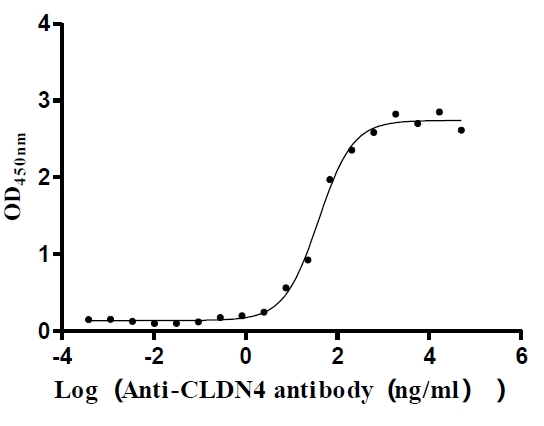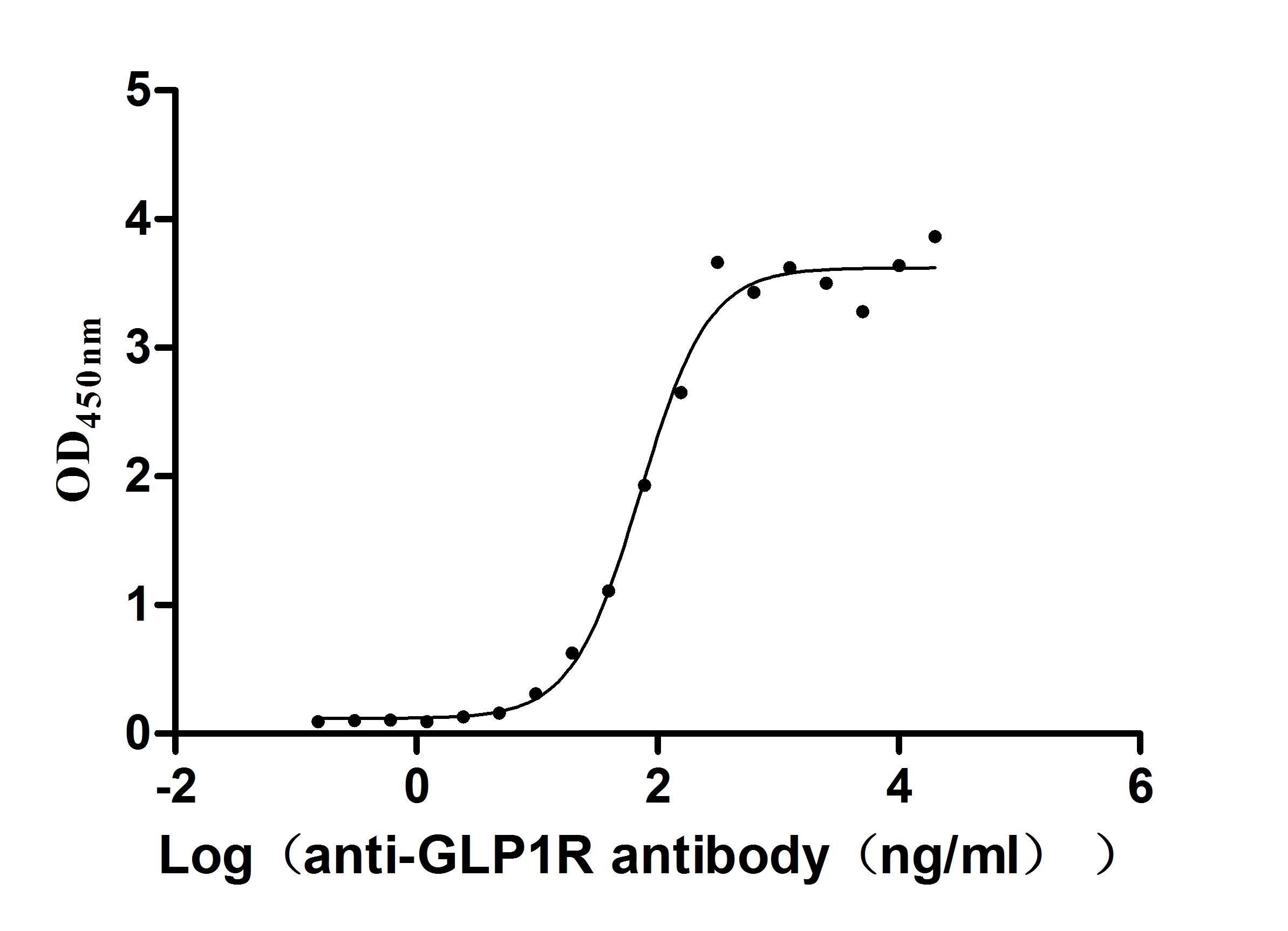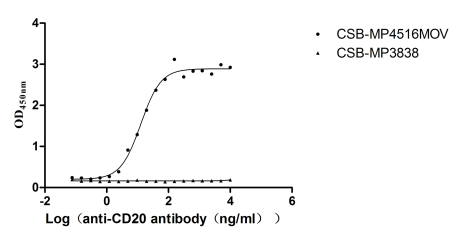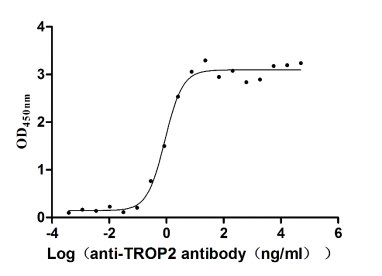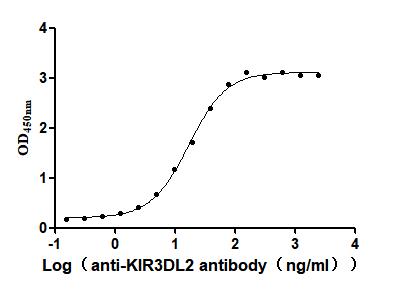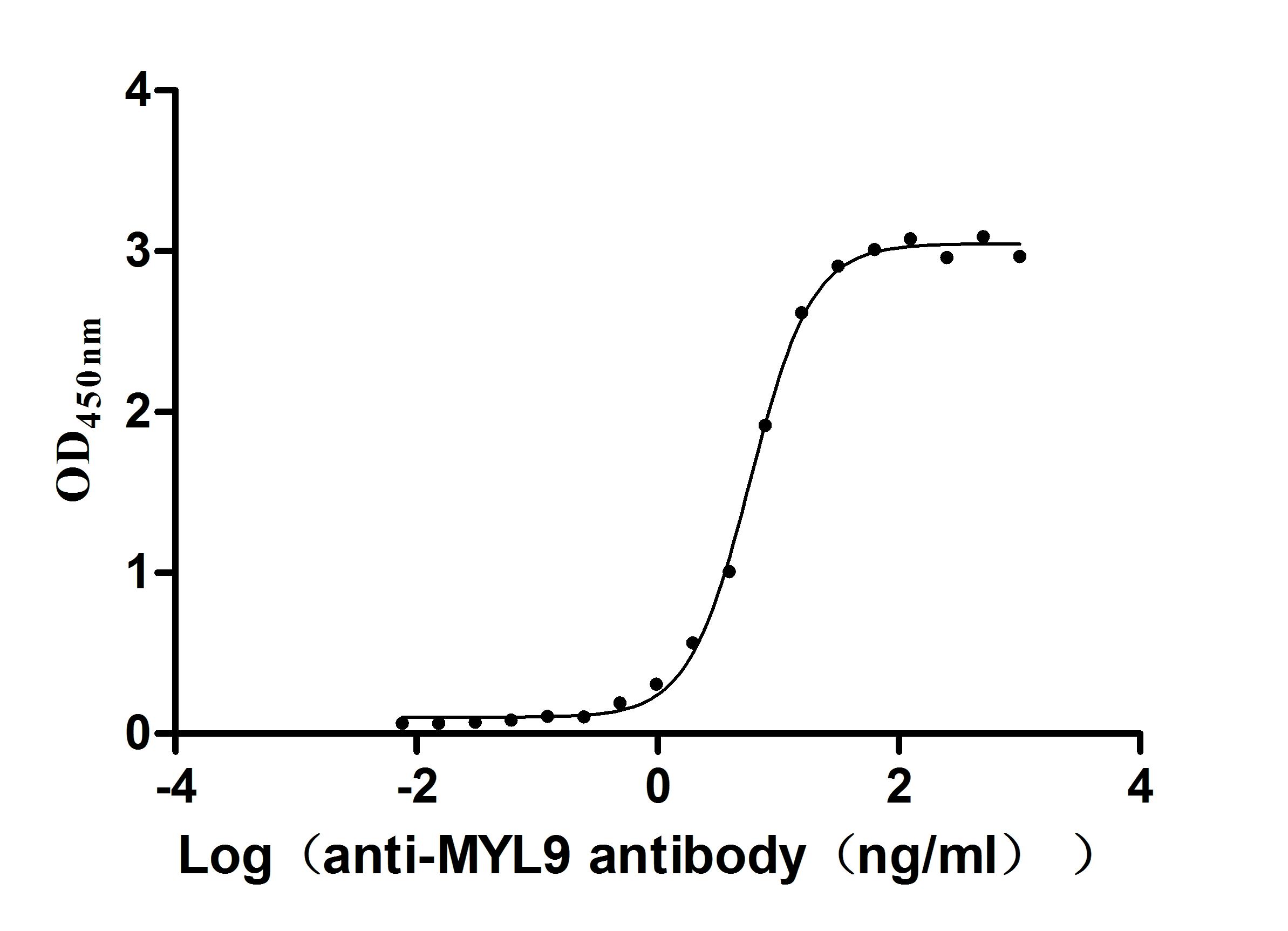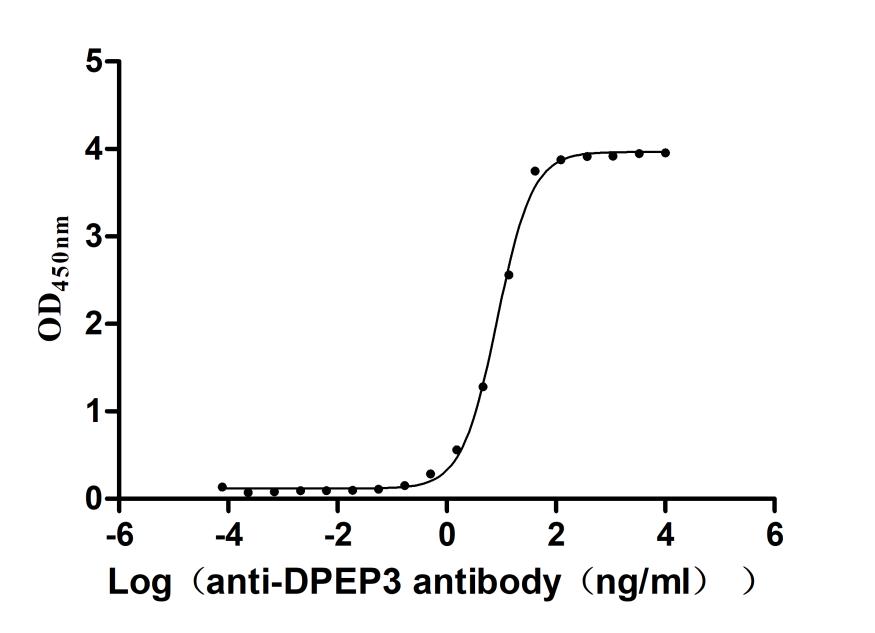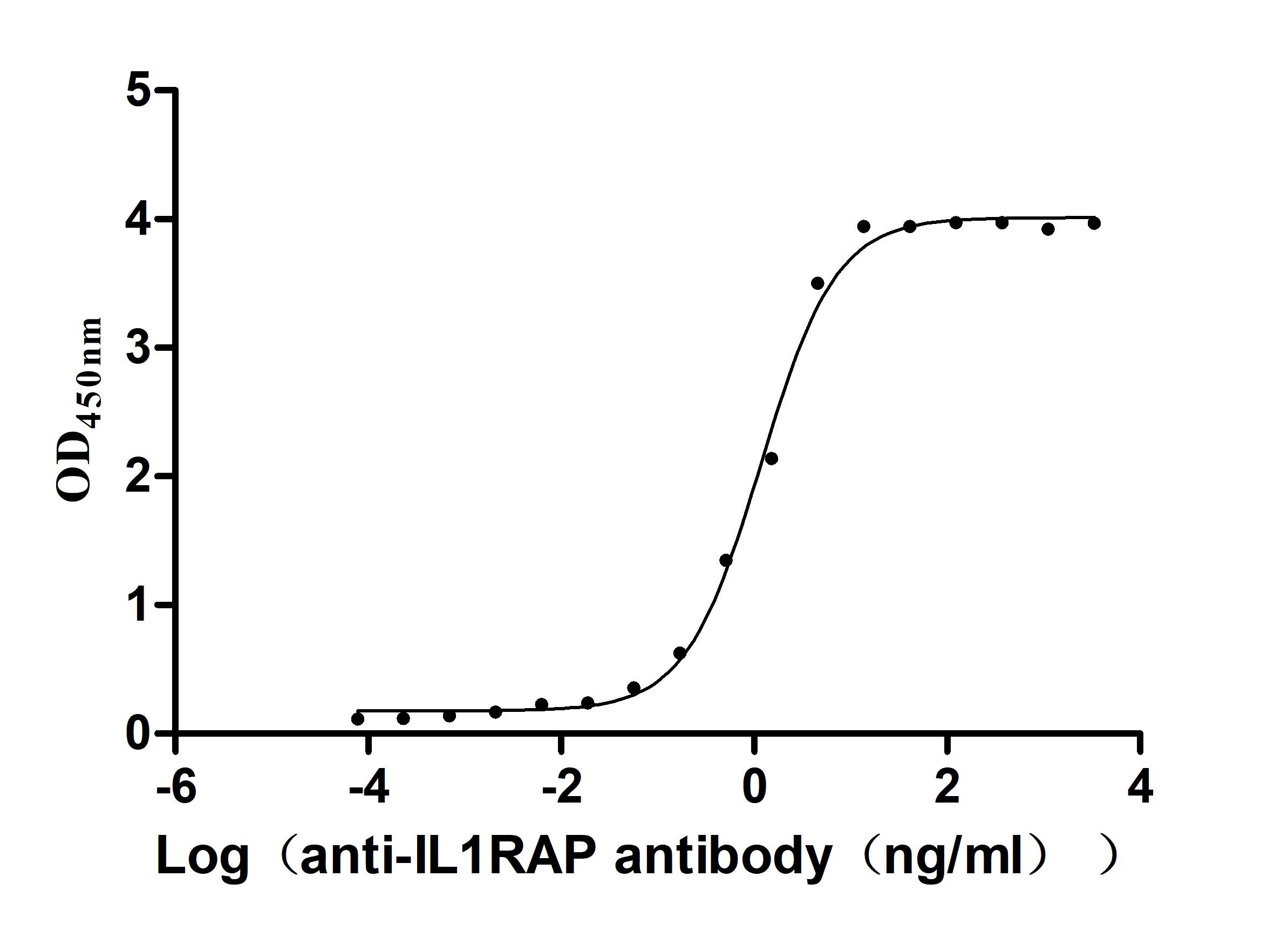Recombinant Mouse Gasdermin-A3 (Gsdma3)
-
中文名称:小鼠Gsdma3重组蛋白
-
货号:CSB-YP730416MO
-
规格:
-
来源:Yeast
-
其他:
-
中文名称:小鼠Gsdma3重组蛋白
-
货号:CSB-EP730416MO
-
规格:
-
来源:E.coli
-
其他:
-
中文名称:小鼠Gsdma3重组蛋白
-
货号:CSB-EP730416MO-B
-
规格:
-
来源:E.coli
-
共轭:Avi-tag Biotinylated
E. coli biotin ligase (BirA) is highly specific in covalently attaching biotin to the 15 amino acid AviTag peptide. This recombinant protein was biotinylated in vivo by AviTag-BirA technology, which method is BriA catalyzes amide linkage between the biotin and the specific lysine of the AviTag.
-
其他:
-
中文名称:小鼠Gsdma3重组蛋白
-
货号:CSB-BP730416MO
-
规格:
-
来源:Baculovirus
-
其他:
-
中文名称:小鼠Gsdma3重组蛋白
-
货号:CSB-MP730416MO
-
规格:
-
来源:Mammalian cell
-
其他:
产品详情
-
纯度:>85% (SDS-PAGE)
-
基因名:Gsdma3
-
Uniprot No.:
-
别名:Gsdma3; Gsdm3Gasdermin-A3; Gasdermin-3
-
种属:Mus musculus (Mouse)
-
蛋白长度:full length protein
-
表达区域:1-464
-
氨基酸序列MPVFEDVTRA LVRELNPRGD LTPLDSLIDF KHFRPFCLVL RKRKSTLFWG ARYVRTDYTL LDLLEPGSSP SDLTDSGNFS FKNMLDVQVQ GLVEVPKTVK VKGTAGLSQS STLEVQTLSV APSALENLKK ERKLSADHSF LNEMRYHEKN LYVVMEAVEA KQEVTVEQTG NANAIFSLPS LALLGLQGSL NNNKAVTIPK GCVLAYRVRL LRVFLFNLWD IPYICNDSMQ TFPKIRRVPC SAFISPTQMI SEEPEEEKLI GEMHEDFKTL KEEVQRETQE VEKLSPVGRS SLLTSLSHLL GKKKELQDLE QKLEGALDKG QKVTLEALPK DVLLSKDAMD AILYFLGALT ELTEEQLKIL VKSLEKKILP VQLKLVESTL EQNFLQDKEG VFPLQPDLLS SLGEEELTLT EALVGLSGLE VQRSGPQYAW DPDTRHNLCA LYAGLSLLHL LSRKSNALTY CALS
-
蛋白标签:Tag type will be determined during the manufacturing process.
The tag type will be determined during production process. If you have specified tag type, please tell us and we will develop the specified tag preferentially. -
产品提供形式:Lyophilized powder
Note: We will preferentially ship the format that we have in stock, however, if you have any special requirement for the format, please remark your requirement when placing the order, we will prepare according to your demand. -
复溶:We recommend that this vial be briefly centrifuged prior to opening to bring the contents to the bottom. Please reconstitute protein in deionized sterile water to a concentration of 0.1-1.0 mg/mL.We recommend to add 5-50% of glycerol (final concentration) and aliquot for long-term storage at -20℃/-80℃. Our default final concentration of glycerol is 50%. Customers could use it as reference.
-
储存条件:Store at -20°C/-80°C upon receipt, aliquoting is necessary for mutiple use. Avoid repeated freeze-thaw cycles.
-
保质期:The shelf life is related to many factors, storage state, buffer ingredients, storage temperature and the stability of the protein itself.
Generally, the shelf life of liquid form is 6 months at -20°C/-80°C. The shelf life of lyophilized form is 12 months at -20°C/-80°C. -
货期:Delivery time may differ from different purchasing way or location, please kindly consult your local distributors for specific delivery time.Note: All of our proteins are default shipped with normal blue ice packs, if you request to ship with dry ice, please communicate with us in advance and extra fees will be charged.
-
注意事项:Repeated freezing and thawing is not recommended. Store working aliquots at 4°C for up to one week.
-
Datasheet :Please contact us to get it.
相关产品
靶点详情
-
功能:Precursor of a pore-forming protein involved in the transition from catagen to telogen at the end of hair follicle morphogenesis. This form constitutes the precursor of the pore: upon cleavage, the released N-terminal moiety (Gasdermin-A3, N-terminal) binds to membranes and forms pores, triggering cell death.; Pore-forming protein that causes membrane permeabilization and pyroptosis. Released upon cleavage in vitro of genetically engineered Gsdma3, and binds to membrane inner leaflet lipids. Homooligomerizes within the membrane and forms pores of 10-15 nanometers (nm) of inner diameter, triggering pyroptosis. Binds to membrane inner leaflet lipids, including bisphosphorylated phosphatidylinositols, such as phosphatidylinositol (4,5)-bisphosphate, as well as phosphatidylinositol (3,4,5)-bisphosphate, and more weakly to monophosphorylated phosphatidylinositols. Also binds to bacterial and mitochondrial lipids, including cardiolipin, and exhibits bactericidal activity. The functional mechanisms and physiological proteases that cleave and activate this pore-forming protein are unknown (Probable). Plays a role in the transition from catagen to telogen at the end of hair follicle morphogenesis, possibly by regulating hair follicle stem cell niche maintenance. Also required for mammary gland development.
-
基因功能参考文献:
- cryo-electron microscopy structures of the 27-fold and 28-fold single-ring pores formed by the N-terminal fragment of mouse GSDMA3 (GSDMA3-NT) at 3.8 and 4.2 A resolutions, and of a double-ring pore at 4.6 A resolution PMID: 29695864
- In this study, we describe a novel mutation (C+/H-: cornea plus, hair minus) in the far C-terminal region of Gasdermin A3 that causes both skin and corneal phenotypes. PMID: 29372254
- The function of Gsdma3 in regulating the development of mammary glands, and it demonstratse that the Gsdma3 gene may act as a suppressor of the immune reaction. PMID: 28168650
- induced expression caused epidermal hyperplasia, skin inflammation and hair cycle defect, suggesting gain-of-function mutations PMID: 26173759
- crystal structure of GSDMA3 showed an autoinhibited two-domain architecture that is conserved in the gasdermin family; the gasdermin-N domain is required for pyroptosis PMID: 27281216
- Our results indicate that the genetic mutations in the C-terminal domain of Gsdma3 are gain-of-function mutations which unmask the N-terminal functional domain of Gsdma3 PMID: 26100518
- GSDMA3 mutation play a specific role in hair growth in alopecia. PMID: 25860385
- Loss of conserved Gsdma3 self-regulation causes autophagy and cell death. PMID: 25825937
- The Gsdma3 may play a role in the proliferation and differentiation of epidermal cells and hair follicles through negatively regulating beta-catenin expression. PMID: 22694914
- in mouse skin keratinocytes, Gsdma3 expression could be regulated by TNF-alpha. PMID: 22585037
- Gsdma3(I359N) is a novel ENU-induced mutant mouse line for studying the function of Gasdermin A3 in the hair follicle and epidermis PMID: 22682752
- The results demonstrate that Gsdma3 causes immune-mediated destruction of bulge stem cells plays a crucial role in the pathogenesis of alopecia in AE mice, and this strain might be implicated in other PCAs including lichen planopilaris. PMID: 22155111
- Gsdma3 gene mutation interfered with catagen formation during mouse hair follicle cycle and, by upregulation of Caspase-3 expression and promotion of apoptosis, Gsdma3 gene could play an essential role in normal catagen induction. PMID: 21805153
- These results suggest that Gsdma3 is necessary in hair shaft differentiation, and involved in Msx2 regulatory pathway. PMID: 20977888
- Gsdm3 reflects a mutation hotspot and that Gsdm3 mutations cause alopecia in Rco2, Re(den), and Bsk mice. PMID: 15475261
- role for gasdermins in differentiation of the epidermis and its appendages. PMID: 15737203
- These results suggest that Gsdma3 is involved in the proliferation and differentiation of epidermal stem cells. PMID: 17572385
显示更多
收起更多
-
相关疾病:Defects in Gsdma3 are the cause of a number of alopecia phenotypes, bareskin (Bsk), defolliculated (Dfl), finnegan (Fgn) reduced coat 2 (Rco2), Rex-denuded (Re-den) and recombination induced mutation 3 (Rim3). These are dominant conditions characterized by loss of hair.
-
亚细胞定位:[Gasdermin-A3]: Cytoplasm, cytosol.; [Gasdermin-A3, N-terminal]: Cell membrane; Multi-pass membrane protein. Mitochondrion membrane; Multi-pass membrane protein.
-
蛋白家族:Gasdermin family
-
组织特异性:Highest levels in skin with weak expression in placenta and testis. Not detected in the gastrointestinal tract. In skin, expressed in postnatal hair follicles and epidermis as well as sebaceous gland basal cells.
-
数据库链接:
KEGG: mmu:450219
UniGene: Mm.371065
Most popular with customers
-
Recombinant Human Claudin-4 (CLDN4)-VLPs (Active)
Express system: Mammalian cell
Species: Homo sapiens (Human)
-
Recombinant Human Glucagon-like peptide 1 receptor (GLP1R), partial (Active)
Express system: Mammalian cell
Species: Homo sapiens (Human)
-
Recombinant Macaca fascicularis Membrane spanning 4-domains A1 (MS4A1)-VLPs (Active)
Express system: Mammalian cell
Species: Macaca fascicularis (Crab-eating macaque) (Cynomolgus monkey)
-
Recombinant Human Tumor-associated calcium signal transducer 2 (TACSTD2), partial (Active)
Express system: Mammalian cell
Species: Homo sapiens (Human)
-
Recombinant Human Killer cell immunoglobulin-like receptor 3DL2 (KIR3DL2), partial (Active)
Express system: Mammalian cell
Species: Homo sapiens (Human)
-
Recombinant Human Myosin regulatory light chain 12A (MYL12A) (Active)
Express system: E.coli
Species: Homo sapiens (Human)
-
Recombinant Macaca fascicularis Dipeptidase 3(DPEP3) (Active)
Express system: Mammalian cell
Species: Macaca fascicularis (Crab-eating macaque) (Cynomolgus monkey)
-
Recombinant Human Interleukin-1 receptor accessory protein (IL1RAP), partial (Active)
Express system: Mammalian cell
Species: Homo sapiens (Human)


